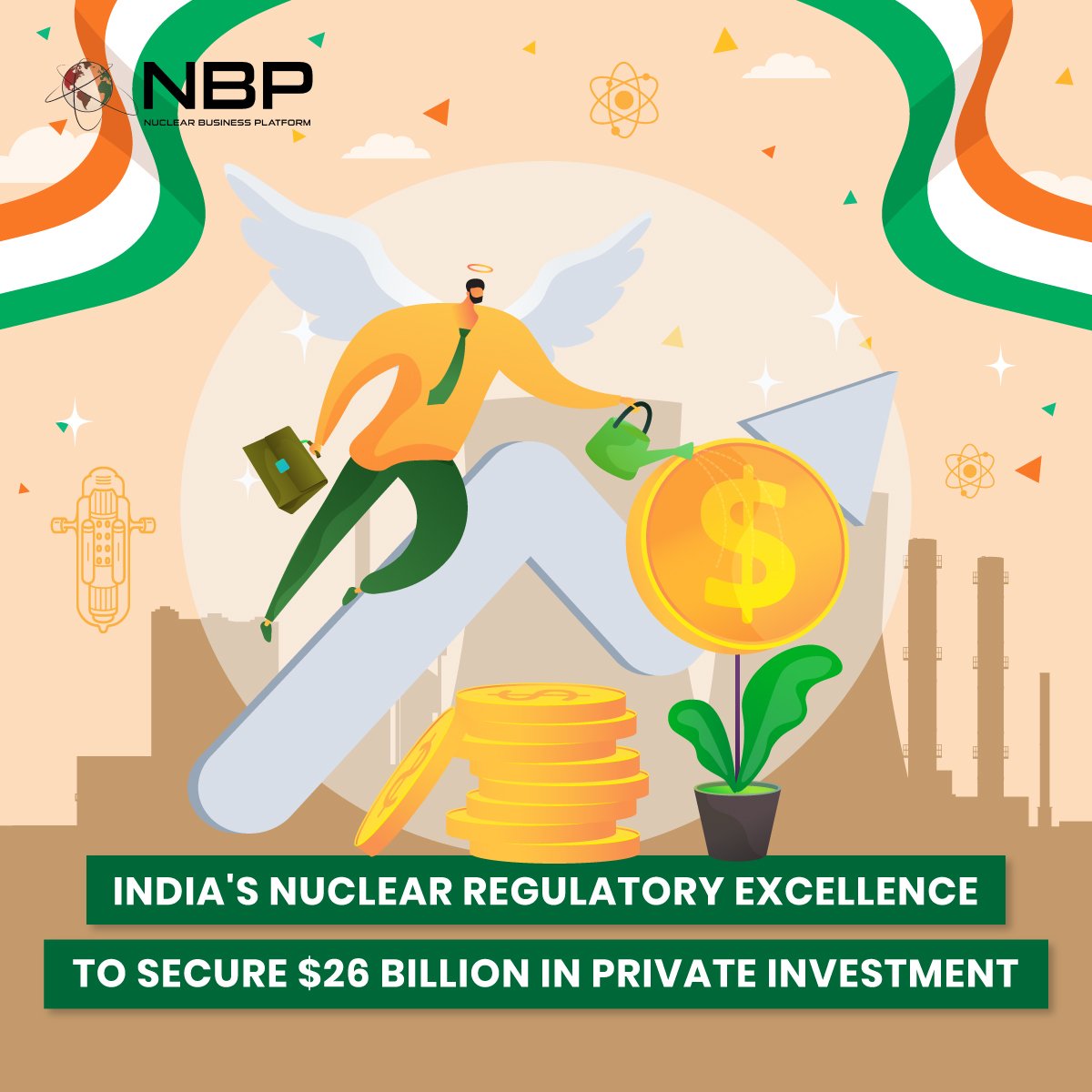India's Nuclear Regulatory Excellence to Secure $26 Billion in Private Investment
India's nuclear energy sector is set for significant growth, with 24 reactors currently generating 8.18 GWe and an ambitious goal of reaching 100 GWe by 2047. A robust regulatory framework, bolstered by strategic policy reforms, is driving this expansion. These changes are opening up new avenues for private investment and foreign collaboration while ensuring safety and compliance with international standards. As regulatory shifts enhance investor confidence and foster innovation, India’s nuclear market is emerging as a critical area of interest for both domestic and global stakeholders.
the Atomic Energy Regulatory Board (AERB)
The Atomic Energy Regulatory Board (AERB) is India's regulatory authority for nuclear energy and ionizing radiation, established under the Atomic Energy Act of 1962. Its mission is to protect public health and the environment from radiation risks. AERB develops and enforces safety standards for nuclear facilities, from siting to decommissioning, and grants consent for their operation following rigorous safety reviews. The board sets radiation exposure limits, reviews emergency plans, oversees training and licensing, and communicates safety issues to the public. It also promotes research and collaborates with national and international bodies to advance safety practices.
Regulatory Framework Governing India’s Nuclear Energy Sector
India’s nuclear sector operates under a robust legal framework promoting safety and accountability:
Atomic Energy Act, 1962: Regulates atomic energy production and use, granting the central government control over nuclear activities to ensure public safety and compliance with international standards.
Civil Liability for Nuclear Damage Act, 2010: Establishes liability and compensation for nuclear incidents, with the Indian Nuclear Insurance Pool offering USD 15 billion in coverage, enhancing investor confidence.
Amendments to the Atomic Energy Act (2015): Allows joint ventures between NPCIL and state-owned companies, encouraging private participation while maintaining state control over nuclear power generation.
Safety Standards and International Compliance: AERB enforces strict safety guidelines, with IAEA reviews recognizing India’s improvements in inspections, staff training, and regulations.
Policy Shifts Shaping India’s Nuclear Energy Market
India's recent regulatory changes signal a strategic shift to attract private and foreign investment while maintaining key government oversight in the nuclear energy sector.
Private Investment: The government has extended invitations to private companies to invest in nuclear electricity projects. India is aiming to attract a total of $26 billion in private investment for its nuclear energy sector. This initiative presents a notable opportunity for private investors to engage in a market traditionally dominated by state entities, thereby contributing to the expansion of nuclear power capacity.
Public-Private Partnerships (PPPs): Joint ventures between the Nuclear Power Corporation of India Limited (NPCIL) and private companies are emerging as a crucial strategy to boost nuclear infrastructure. This collaboration reduces the financial burden on the government and allows private firms to share in the growth of the nuclear energy market.
Foreign Direct Investment (FDI): The government is in discussions about allowing foreign direct investment in the nuclear sector, with the goal of combining domestic private involvement with global expertise and technology. This could attract international nuclear technology providers, fostering competition and innovation.
Legal Reforms: The 2015 amendment to the Atomic Energy Act allows NPCIL to partner with other government entities, paving the way for private and international collaboration. Although private companies cannot directly control nuclear power generation, they are now able to participate in joint ventures, contributing to reactor construction and operations.
Budgetary Allocation: The Union Budget for 2024-25 marks a significant milestone for India's nuclear energy sector. The government has committed $270 million to advance nuclear power projects, highlighting a robust investment in expanding the country’s nuclear infrastructure. Additionally, the budget allocates $14 million specifically for the enhancement of the Atomic Energy Regulatory Board (AERB), underscoring a strong focus on strengthening regulatory oversight and safety measures within the nuclear sector.
Small Modular Reactors (SMRs): In August 2023, Minister of State Jitendra Singh informed the parliament that the government was considering options for SMRs and exploring ways to involve the private sector and start-ups in such projects. As part of the 2024-25 budget, the Indian government announced plans to develop small modular reactors, with a focus on setting up Bharat Small Reactors. This initiative recognizes a significant role for nuclear energy in the country’s future energy mix and includes the installation of 40-50 units, primarily to replace captive thermal power facilities.
In conclusion, India's dynamic nuclear energy sector reflects a strategic vision aimed at leveraging significant growth opportunities while upholding a strong regulatory framework. The IAEA's follow-up mission in 2022, following the Integrated Regulatory Review Service (IRRS) assessment from 2015, underscored India's regulator's commitment and professionalism in ensuring nuclear and radiation safety. With the sector increasingly open to private and foreign investment, these regulatory advancements are enhancing investor confidence and setting the stage for transformative progress. This proactive stance positions India as a key player in the global nuclear market, creating compelling opportunities for stakeholders and signaling a future of substantial success.
The 5th edition of India Nuclear Business Platform (INBP) will take place in Mumbai this 19-20 November 2024. The industry meeting will feature all the officials and players across the Indian nuclear supply chain. For more information on this meeting including exhibition opportunities, click here



